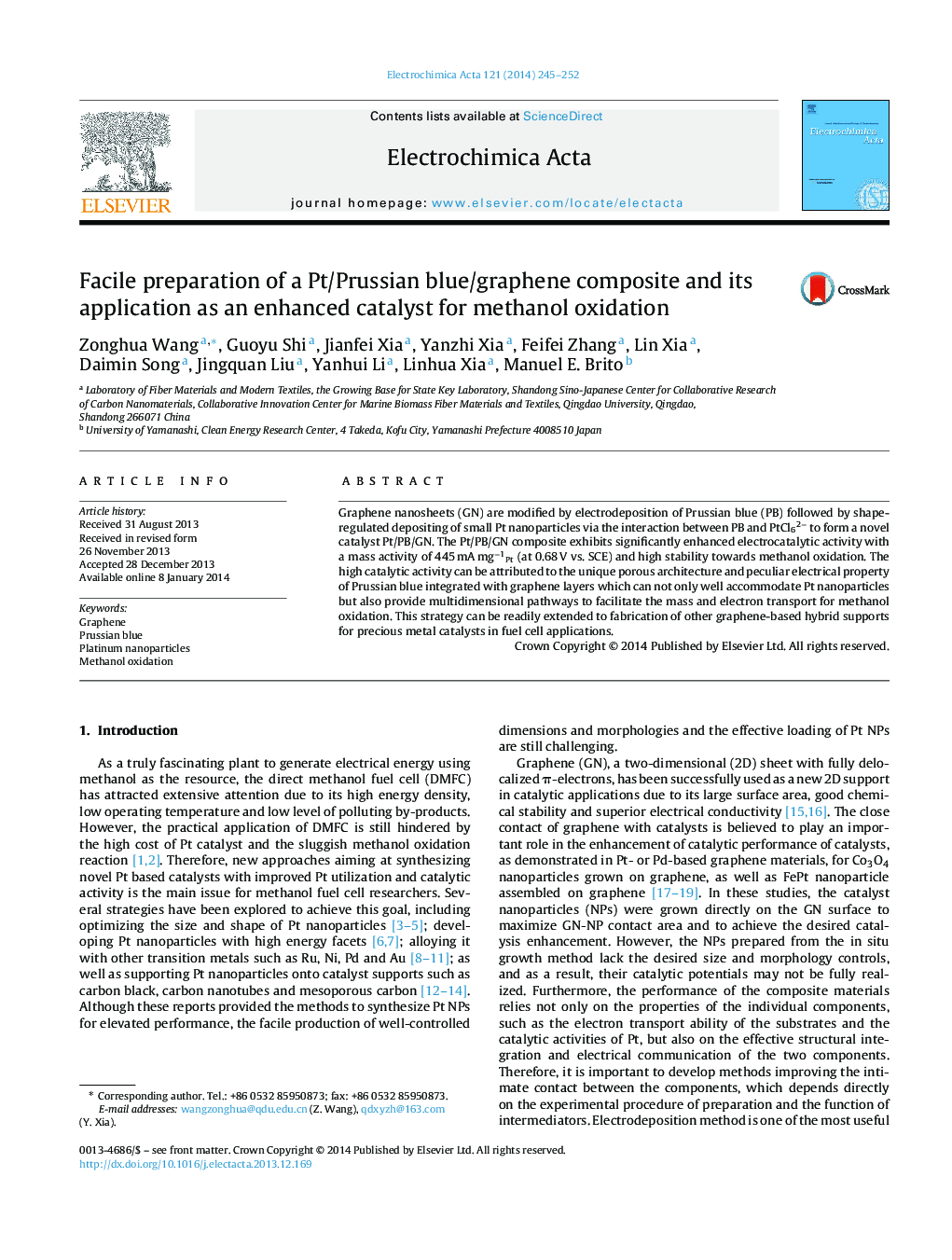| کد مقاله | کد نشریه | سال انتشار | مقاله انگلیسی | نسخه تمام متن |
|---|---|---|---|---|
| 186556 | 459617 | 2014 | 8 صفحه PDF | دانلود رایگان |

• Pt/Prussian blue/graphene catalyst was easily synthesized by the sequential electrodeposition method.
• Prussian blue can promote the homogeneous growth of small Pt nanoparticles.
• The as-made catalyst exhibited enhanced electro-catalytic performance for methanol oxidation.
• The interplay of Prussian blue and Pt plays a significant role in reducing CO poisoning of the catalyst.
Graphene nanosheets (GN) are modified by electrodeposition of Prussian blue (PB) followed by shape-regulated depositing of small Pt nanoparticles via the interaction between PB and PtCl62− to form a novel catalyst Pt/PB/GN. The Pt/PB/GN composite exhibits significantly enhanced electrocatalytic activity with a mass activity of 445 mA mg−1Pt (at 0.68 V vs. SCE) and high stability towards methanol oxidation. The high catalytic activity can be attributed to the unique porous architecture and peculiar electrical property of Prussian blue integrated with graphene layers which can not only well accommodate Pt nanoparticles but also provide multidimensional pathways to facilitate the mass and electron transport for methanol oxidation. This strategy can be readily extended to fabrication of other graphene-based hybrid supports for precious metal catalysts in fuel cell applications.
Figure optionsDownload as PowerPoint slide
Journal: Electrochimica Acta - Volume 121, 1 March 2014, Pages 245–252